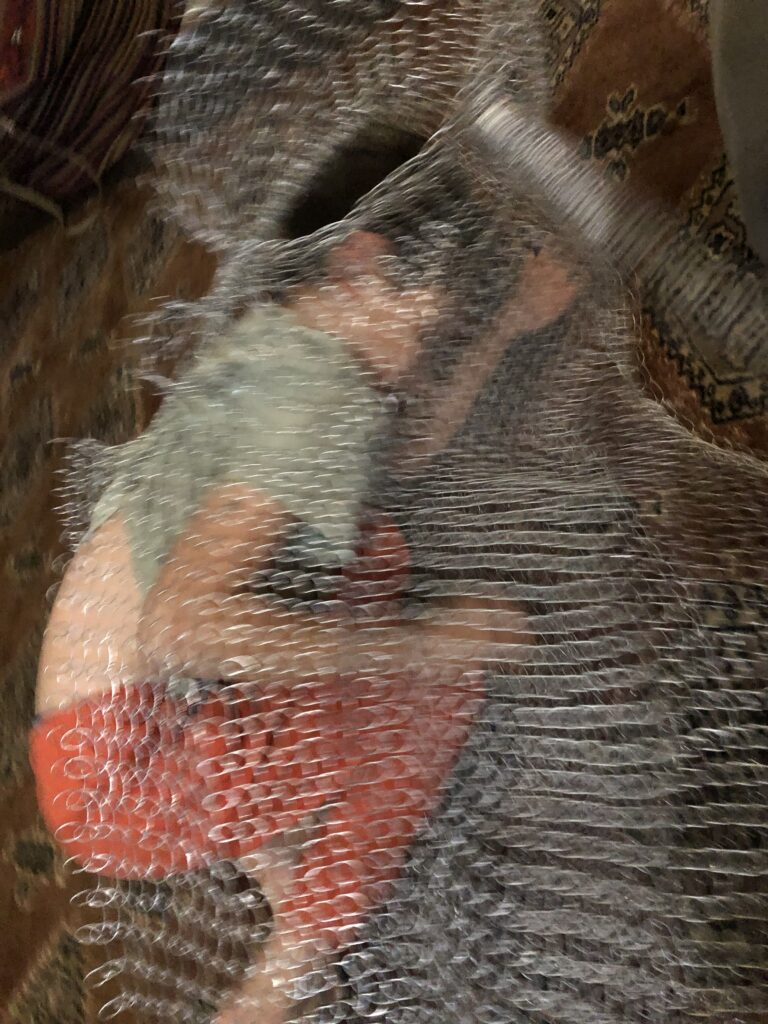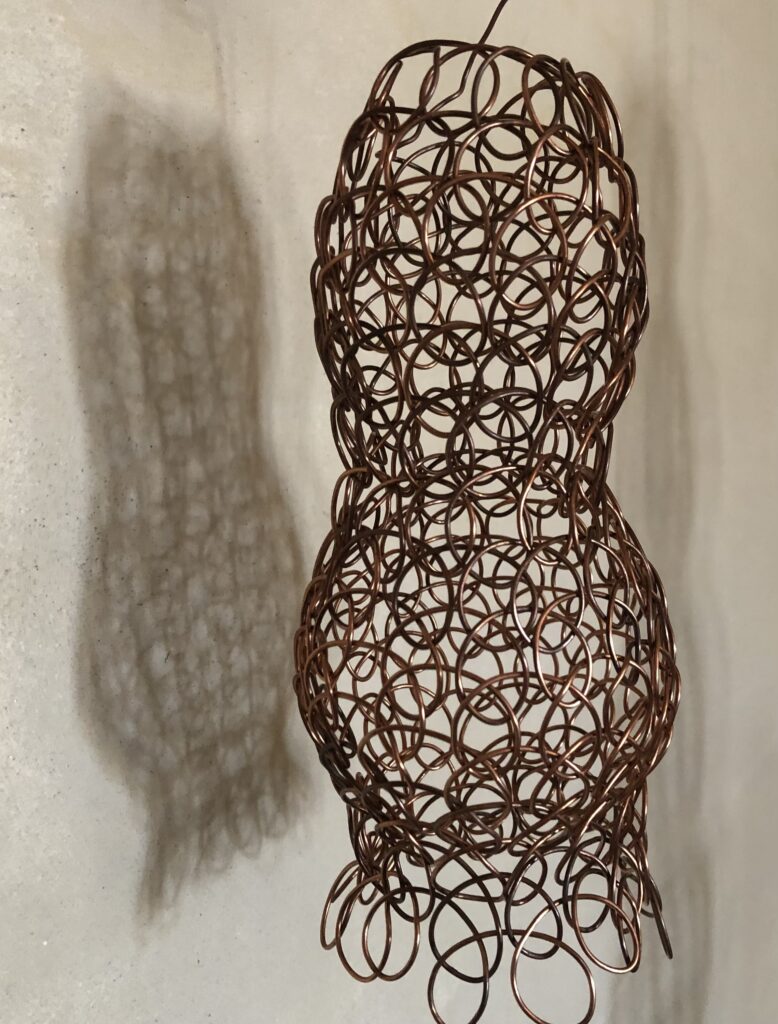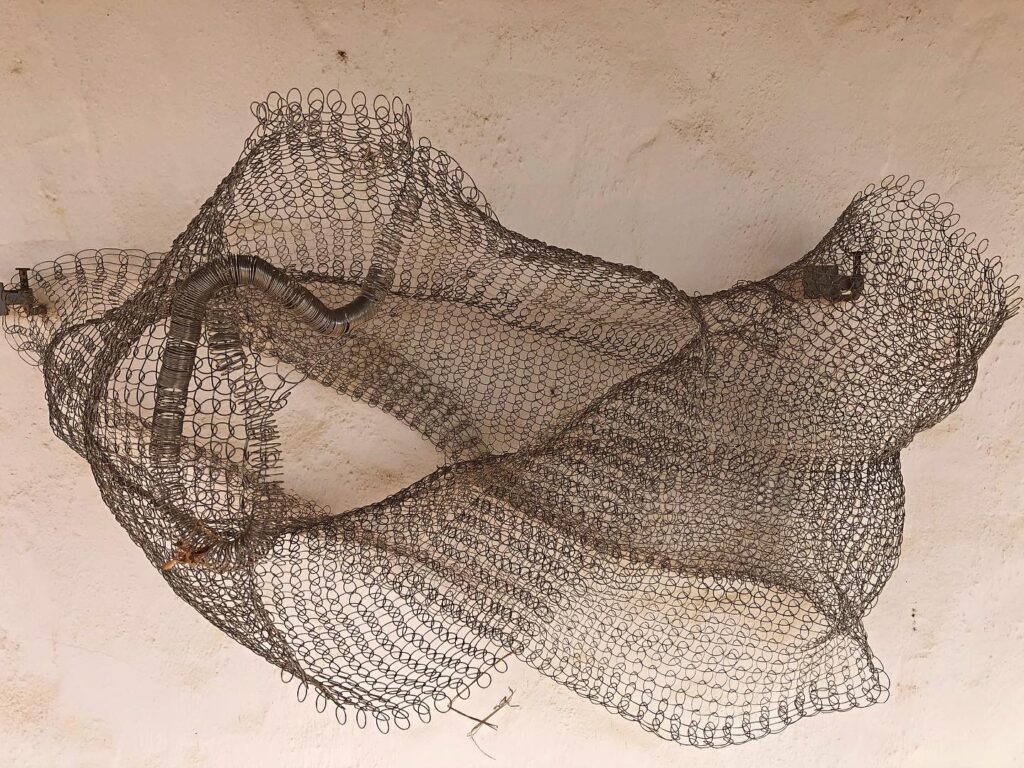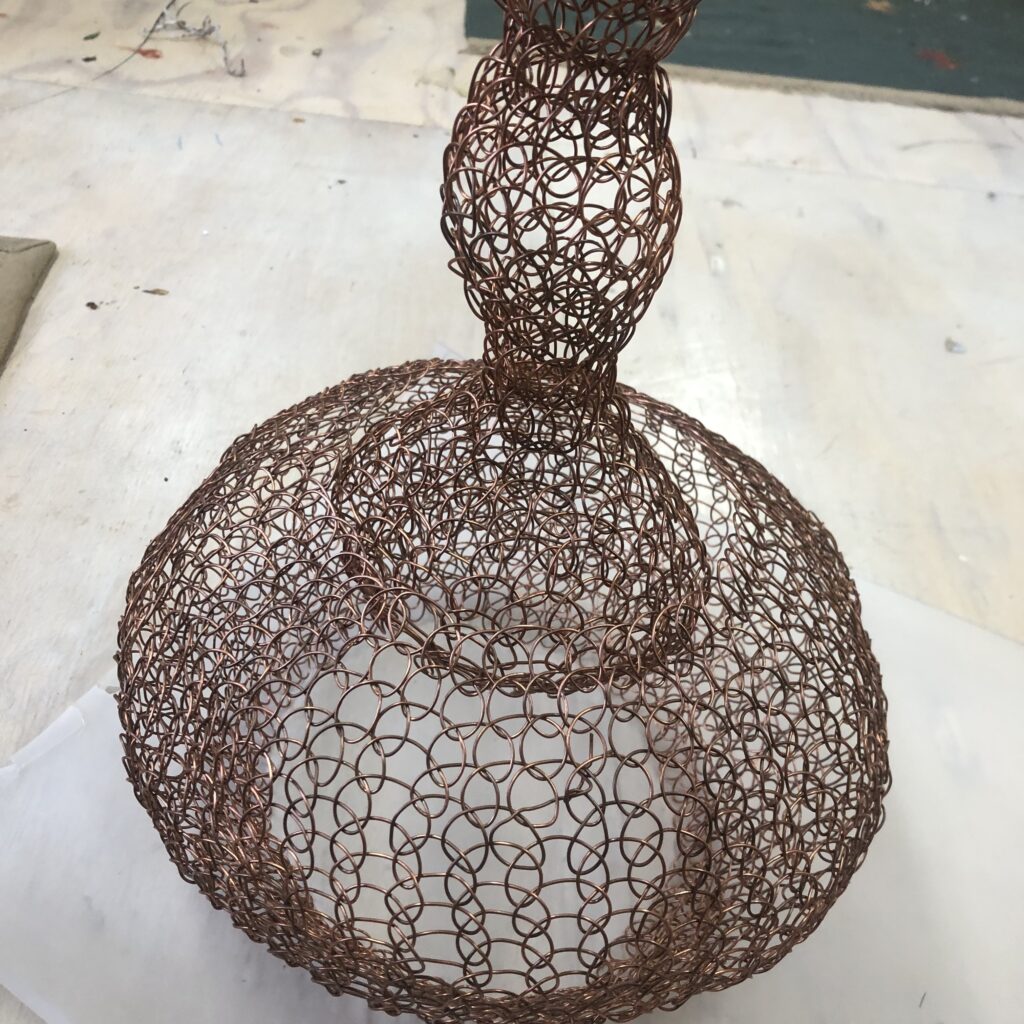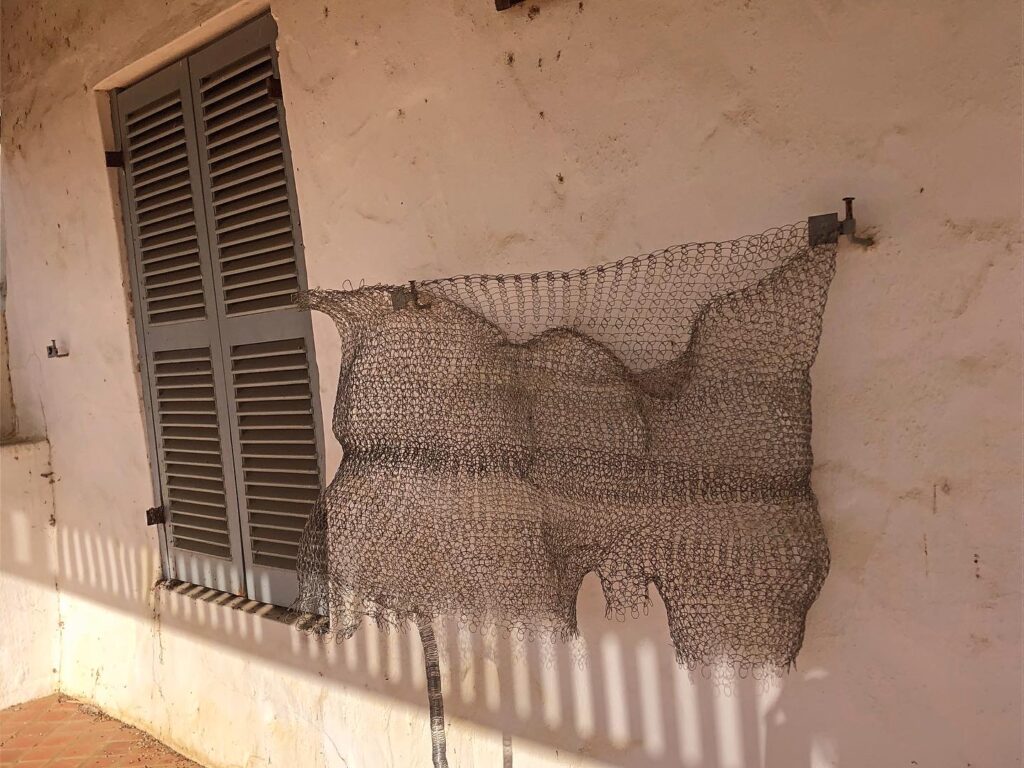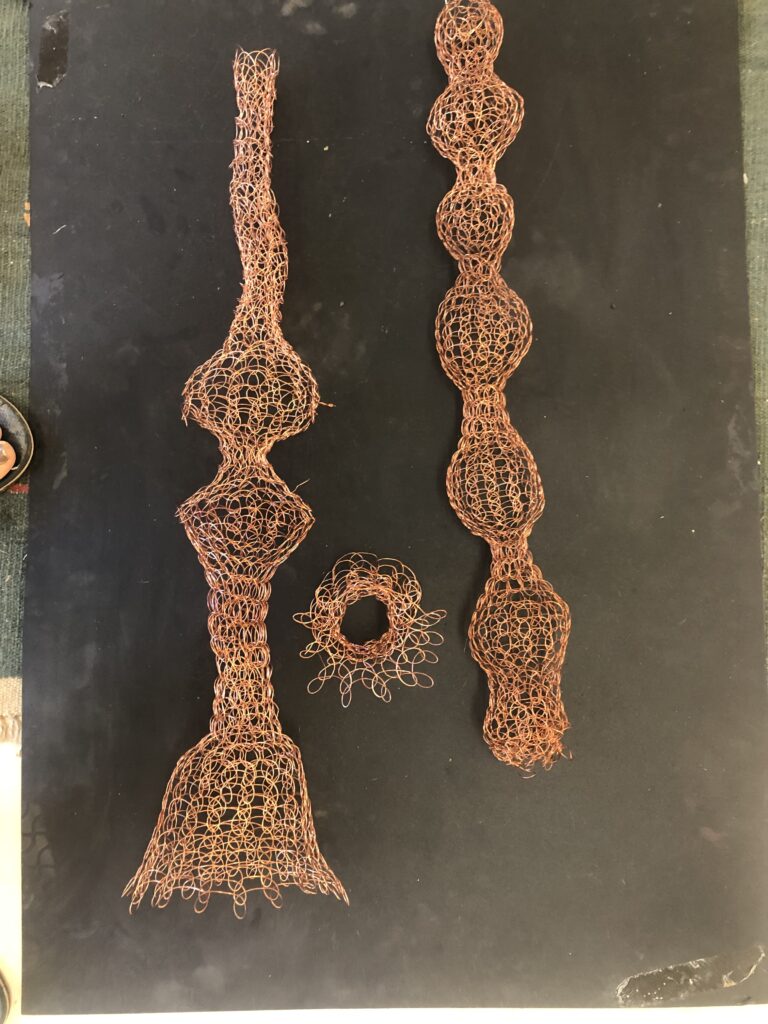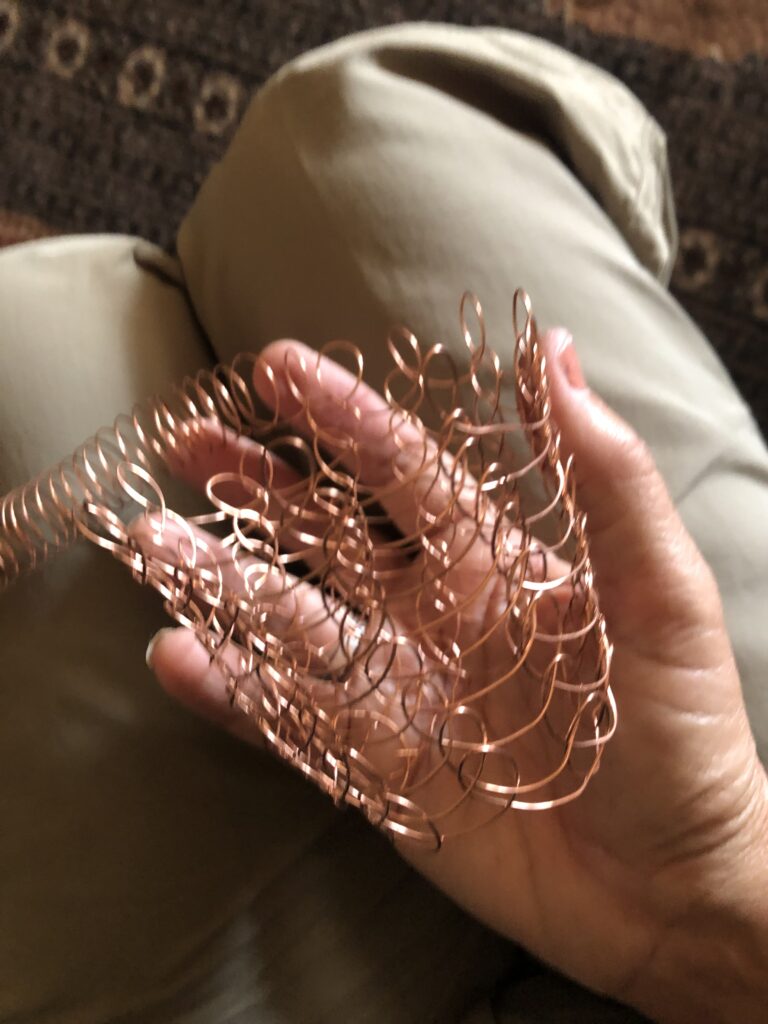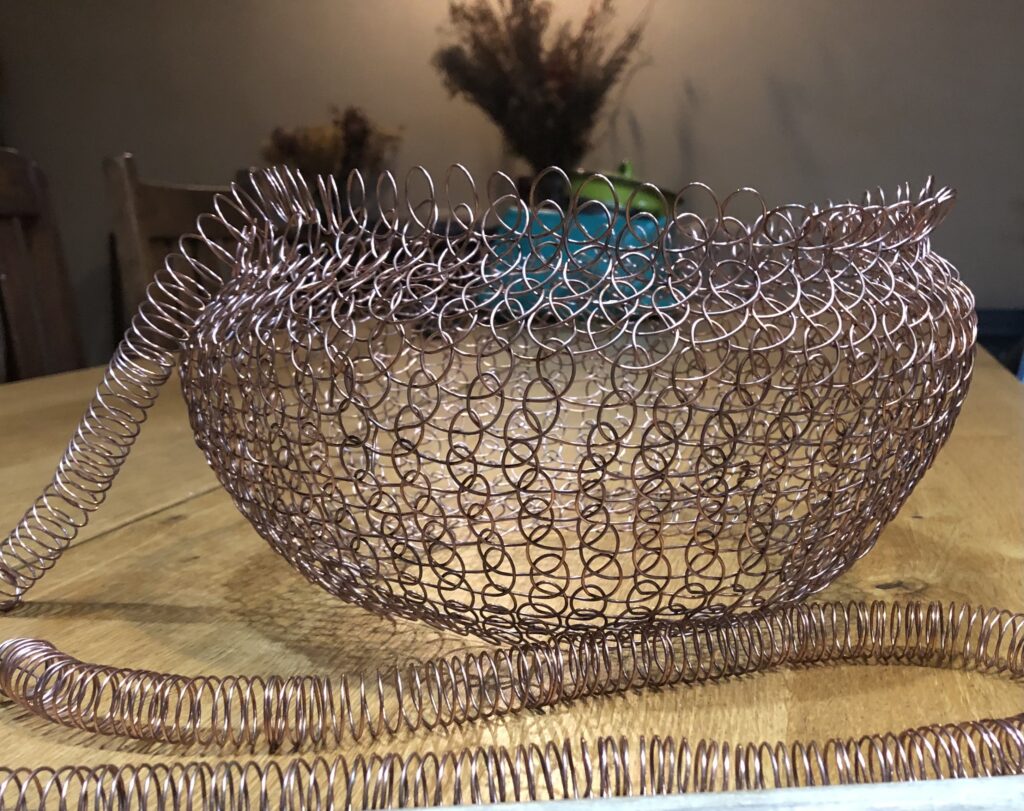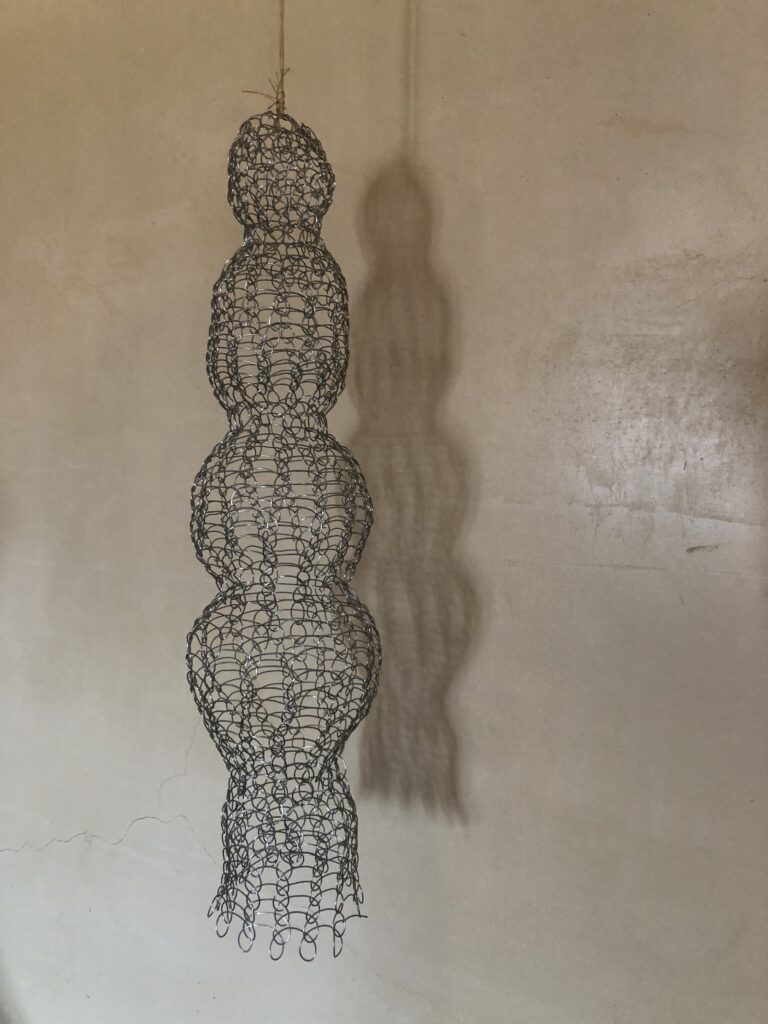Earlier this week, I prepared for a discussion with students in the OCA EU group. Unfortunately, due to technical issues on my side, I could not share my work. I decided to share it on the Grubby Hands Padlet as we are all in the Fine Arts cohort. I appreciate any feedback.
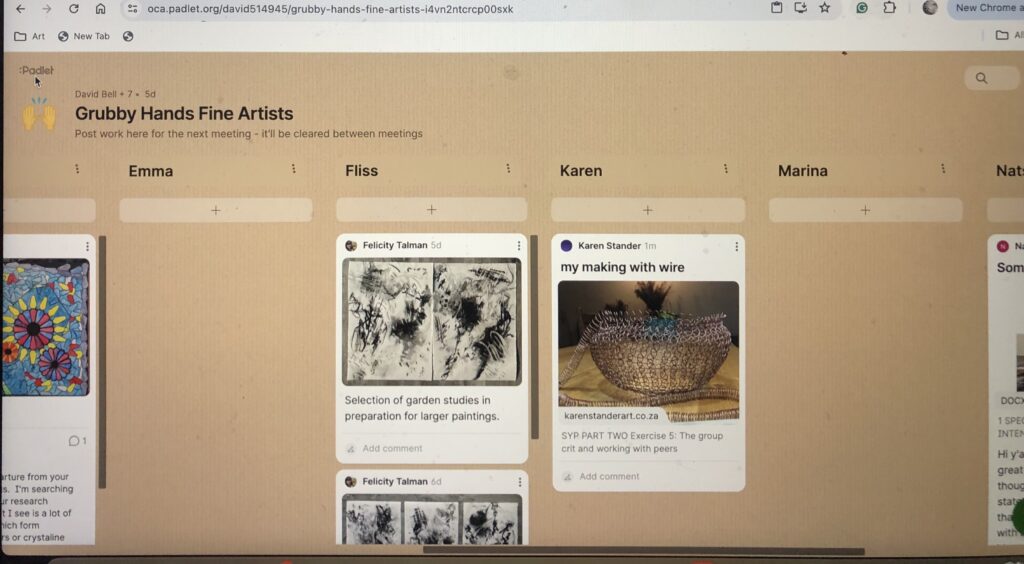
Why nest-making?
It is a personal story of loss, becoming, adapting, and care. Lately, I have explored whether a nest is where things are held together in a safe space, versus the feelings I have experienced of things coming apart. I also wonder about nests in terms of how territory and belonging affect humans and non-humans. Can I explore this in the materials being utilised and consider the social cohesion that exists or the value being placed on nurture and care.
“Care is a species of activity that includes everything we do to maintain, contain and repair our ‘world’ so that we can live in it as well as possible. That world includes our bodies, ourselves and our environment, all of which we seek to interweave in a complex, life sustaining web.” Joan Tronto
To me, my artmaking is creation, and in many ways, my making and learning/studies are a process of becoming. I therefore imagine this process has to consider unravelling, discarding, moving on, changing direction, getting rid of…..starting again and again, or looking at things afresh. I was considering exploring paper as another material to work with, and my tutor challenged me to destroy some of my drawings/paintings—to put them through a paper shredder.
I want to probe with you in my why, what and how….and will quickly share some context into my making.
How I work
Influenced by the work of Claire Falkenstein (she foregrounds the presence of negative space and contemplates infinite space) and Ruth Asawa (she shows how a solid form can become a transparent sculpture), I learned a looping technique to create objects with wire. I currently mainly work with steel and copper wire. I have also explored and made work with raffia and plant materials during the previous part of Fine Art 3 – and learned from fibre artists who use basket weaving and random weaving techniques.
My bigger nests, one in raffia and the other in steelwire are linked to social weaver nests. These giant nests, found only in Western Southern Africa, are built by social weaver birds. They can reach up to 7m in length and are an example of cooperative bird building. Up to 5 to 100 breeding pairs will ‘lodge’ in these huge hut-shaped nests. The exciting thing about their making is that they do not weave their nests like other ‘weaver birds’ but stack, push into and layer with found materials. The nests can weigh up to 2000lb and are mostly found in thorn trees and telephone poles.
I started to upscale the nests for my final Body of Work for SYP. I intend for the work to share feelings of connectedness to non-humans and nature and our shared need for protection, support, and care.
As students, we are asked to continuously reflect on our intentions: having a method of creating with wire by making e-loops and then constructing forms is my process of making for the nests. I also see this process as lines in space, just like drawing. I do like to see my work as thinking with my hands. A lot is still to be learned about how to join or create small and big forms as one works. My main focus for my making process is on getting form and structure and sharing the material presence as hanging transparent and ephemeral objects. The viewer can have the freedom to explore meaning. There is a lot to learn about and integration of body, mind and material.
Materials
I work mostly with copper and galvanized steel wire. My tools are pliers and dowels of different lengths. Lately, I have started working only with fence wire I buy at our local AgriMarket. I need a lot of material for the nest, so I bought wire in bulk—50kg of wire.
The materials used are not upcycled/found/natural and contrast with the natural/found materials of the bird nest—how do I deal with that? (I am contemplating adding found materials.) Wire represents a rigid material in contrast with dry grasses birds would mostly use. The wire I use is mostly around 1.6mm in thickness. I like to think of the wire as symbolizing resilience and adaptability. Wire, though flexible and bendable, is also strong and enduring, much like the human spirit. I feel that materiality became part of the process of how art provides emotional qualities as well as meaning. Each wire contributes to the overall structure, much like relationships and experiences weave together to form the fabric of our existence
I like the juxtaposition of materials and processes in the discovery that sociable weavers do not ‘weave’ their nests but use a different method of stacking, and I, a human, am ‘building’ a nest with wire and looping continuous lines into each other to create form. I am tempted to explore paper or other materials I could upcycle.
Reflecting on Banksy’s “Love Is In The Bin” provided me with a valuable lens through which to consider my artistic practice. By examining themes of destruction and creation, value, duality, and historical significance, I can gain deeper insights into the complexities and potentials of my work. I want to embrace these reflections to enhance my art’s conceptual depth and narrative richness, making it both a finished piece and an ongoing process. I recently also gave thought to ideas around unravelling and being vulnerable in my work around a deep process of grieving for a son whom I lost due to self-death and the feelings I had of coming apart.
The above reflection asked me to consider how I balance the idea of my artwork being a
finished piece versus a part of an ongoing process of creation and destruction. I now felt more comfortable with my WHY. This experience motivated me to add it to my body of work and also show it at a local exhibition (Solo Studios, August 2024).Here I will prompt viewers to participate in the making by either building onto the work or deconstructing it. The process will be documented. I started making a list of ‘reusable’ materials which could be used at the exhibition.
More questions to explore:
- What do I hope to achieve?
- How does it reflect my views on art and creativity?
- What experience would l like to convey to my viewers?
